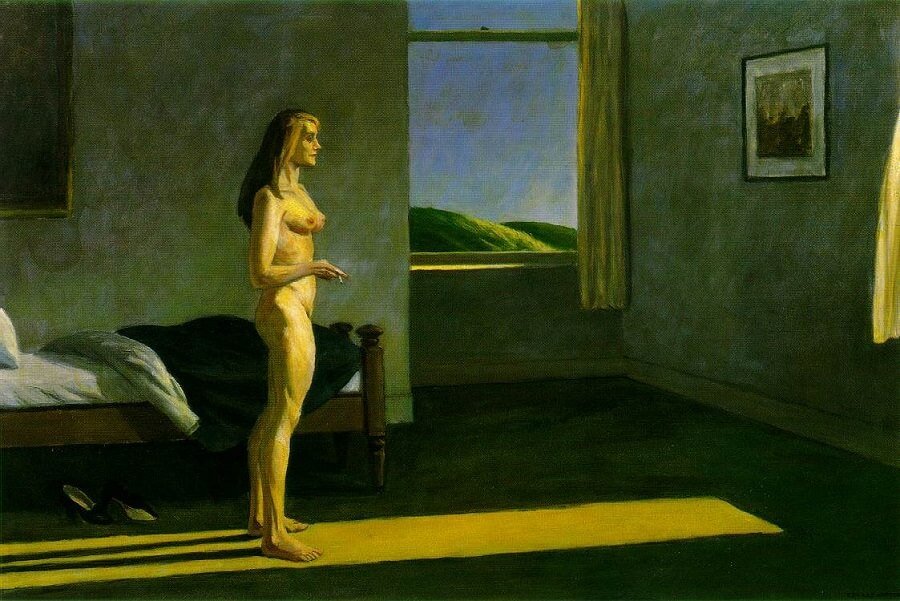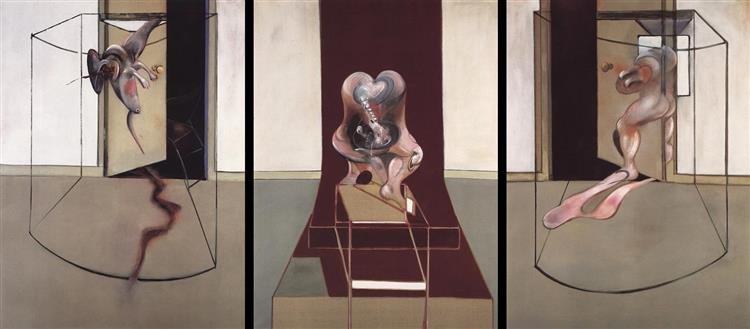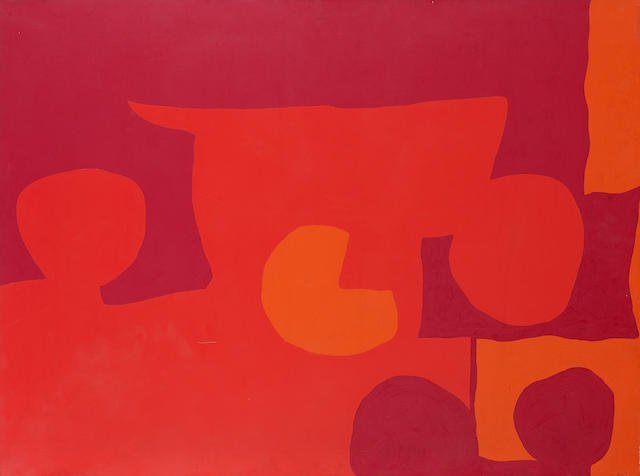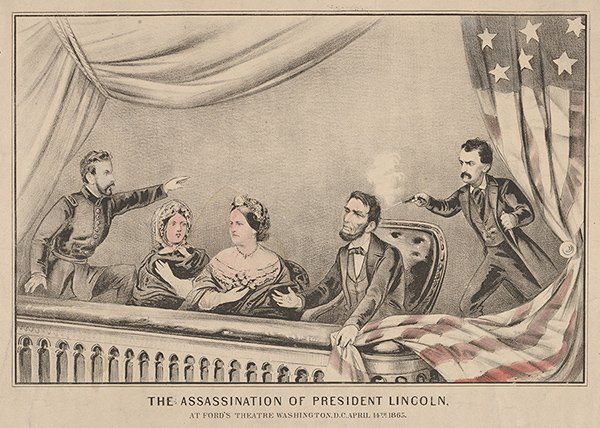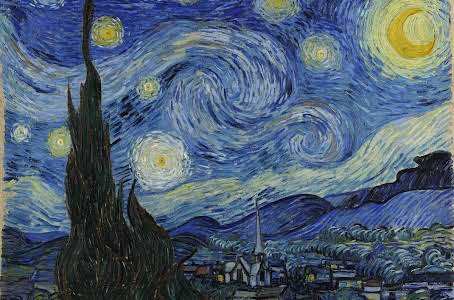Ekphrasis is a writing technique that uses an artwork as the starting point for poetic, or narrative response. The writings below use the ekphrastic technique to verbally step inside the chosen pictures and playfully engage in conversation with them.
Henri Rousseau, The Dream, 1904
Dear M. Rousseau,
Since I discovered this burgundy divan all in the jungle seems touched by civilization. When I recline here the only thing missing is a glass of Bordeaux. I imagine holding it in my outstretched hand, but before its dryness wets my lips I would offer some to the mysterious flute playing charmer, who always arrives exactly at dusk and stays just long enough play the jungle flowers to sleep.
Douanier,
Its true lions lurk in the undergrowth and snakes sneak through trees. Sometimes they slither along the curve of my torso like a shiver in the night. The plants are like feathery fingers reaching to touch me, to twine around my limbs. I have to shake them loose in my sleep. There are birds I have seen that would shame the color from a rainbow. And others in hiding that sing the sun up into the sky like a choir of angels.
In this torrid zone there is no need for attire and no one’s around to admire my style, so I go au natural and have taken to braiding my ever lengthening locks like an Indian maiden. From my vantage point on this plush upholstery it’s as if I can look out on the whole myriad and strange world. If I choose to I can stare up at the twilight and welcome the familiar face of the moon, whose smile is always bright and aloof. The first stars remind me of the earrings I once wore, diamonds borne from deep in the earth. Like a miracle they adorned me for the duration of a sigh.
Adieu,
Emmeline
“Great Idea” Zhao Mengfu, Chinese (Yuan Dynasty), 1254-1322
“Great Idea”
The background is white but not the blinding white of new snow assaulting my vision as I open the curtain on the sunny aftermath of a winter storm. No, not that white at all. White like old porcelain stained from a thousand cups of tea.
What to say about the calligraphy? At a glance, it means nothing to me that I can translate meaningfully, this series of marks slashed as if by a fencing master with, instead of a foil, a horse-hair brush loaded with the ink of a moonless night, whose opponent is an un-improvable white rectangle.
Marks tumble. Lines in eccentric descent wobble, waft and undulate with effortless ease and sudden speed. A melody made visible, a dexterous utterance of avian parlance- lark or oriole breaking the snowy silence with a brief song.
Edward Hopper “A Woman in the Sun” 1961
Hopper Morning
Good morning, morning, I greet you with closed lips, welcome you with tobacco-laced breath. I hold you between the tips of my fingers- you’re cool and smooth, like the edge of the bed sheet. I face you naked. Your friendly glare casts my misshapen shadow on the worn carpet. I stand rooted to this spot smack in the middle of eternity. I’m the central figure in this composition from life, which makes everything else in the universe my background. The dull walls frame my unabashed imperfection, as I stare unblinking into the light pouring through the open window. A breeze luffs the gold drapes. It is a sigh of acceptance, containing molecules of past disasters and the aftermath loving embraces. There’s no space in this empty room for sorrow, laughter or confessions of truth. I have left my best intentions indented on the mattress- a shallow pool of absence. I have awoken into the daydream of a sensual geometrician. I exist to direct your gaze past me toward the pulsing glow of now. I wait for a cloud to pass over the brow of the sun. I wait to hear my name shouted from a distant dune. In this sleep-scented room it is always two and a half hours before noon.
Humphrey Bogart and Ingrid Bergman in “Casablanca”
I remember faces those founts on the fronts of people’s heads eyes noses mouths lips moving tongues touching teeth to shape spoken words faces bared to reveal a grin or a grimace I used to look at faces for pleasure curiosity a glimpse into the mystery within or just to follow the flow of emotions projected on the visage screen like light from an internal projector’s beam such as Ingrid Bergman’s soft countenance contemplating in Casablanca the conflicted merge between present and past as she absorbs the sentimental melody that conjures the leading man whose cool Bogart façade is quick to anger upon recognizing the tune a flash of hurt then across the smoke-filled room guarded joy as he spots her perfect face it’s a voyeur’s moment a glimpse of naked expression I recall looking at into through bare-faced humans unafraid of sharing air carefree in crowded airplanes looking away from a stranger’s glance but not avoiding the danger of a breath exhaled the dimmed light of a face behind a Covid mask is a plight of senses denied so I take refuge in tonight’s silver screen feature beautiful faces in subtle grisaille safely exposed in my living room at the close of another faceless day
Mark Rothko, Untitled, 1959
Chateau Rothko
the doorway waits opening O mouth hollow oblong gate outside out aftermath of a shout hovering ring of fire in the air nowhere burnt crop circle iris of crow spiraling wind cone gathers bones broken vows milkweed seeds scattered words wave on wave gouged earth ground-up sounds buried in maroon window in no-one’s home place erased architecture traced on a charred sheet of last night’s lost sleep red plateau bed of unborn flowers here not here horizontal mirror in the chateau Rothko
Francis Bacon, Triptych Inspired by Oresteia of Aeschylus, 1981
FB Was Here
man faces mirror disappears into a cloud of flesh and chiaroscuro wet words the least of his worries great eyebrows frown he swallows and drowns the clock in milk the sink is full of purple down a curved hallway crowded with implications man wrestles with demons shoelace tied to a hollow cavity in his gag reflex a chair is what’s needed to support the putty that seems to be he he-he ear of tongue eye-hole intestine hung from big toe over the gash the fissure that issues a river of blood of fire of subterranean ooze that lengthens through the red room writhing snake of vertebrae nervous emergency of crimson stolen apparition glimpsed and forgotten torso pinned to the instant whose legs have just stepped outside for a smoke
Jules Olitski, Second Night of Summer, 1979
stop here wait for what? gray (nothing but) today a painting like a prolonged silence dust of dusk colors escape leaving lavender muted to a hiss vista submerged mist of forgotten verses forest of nerve fibers irresolute horizon shadow-less moment on the periphery of Saturday
Pablo Picasso, Bathers, 1918
Portrait of the Artist as Satyr
Ah, to be on the beach, a bather in the waves, a lazy lobster growing red under the seething sun, a man of guiltless leisure longing for any of many ladies, all of them holy to behold.
Alas I cannot hold anybody’s body for I am sixty six percent turnip. Though my urge is beautiful I’m no more desired by the lasses on the shore than a housewife wants a housefly on her wad of cookie dough.
So home I go, to paint in my grotto Giotto, where I shape my desire as three. freezing their bikini-clad souls in pigments like a taxidermist in two dimensions.
Dancing motionless on a simple stage of sea and sky, tossing their hair in non-existent wind. That’s me in the background; boulder embedded in sand, man no more.
My work is the pursuit of inviolate pleasure- to clip articles of vision from pages of the moment and pin them to your inner eye. To tattoo my proclivities to the forehead of your unconscious mind.
Though I’m just a troll without the faintest hope of physical redemption, though I’m just an old carrot gone rubbery, I can steal the sun’s corona and hand it to the poor in spirit.
Though my love is a charred journal of forgotten conquests, I breathe with the pungent breath of Satyr as I paint out the wings of an angel to provide for her an earthly moment with me.
Patric Heron- Three Cadmiums
Patrick Heron’s Three Cadmiums
In this expansive canvas, by the British painter, there’s a drought of blue. No cerulean stretched across a wide expanse of mild sky, ultramarine troubled by an unseen force, or turquoise wash filling a cup of evaporated dreams.
Absent also- yellow. No golden glow of sunlight slanted on the kitchen wall, no pale yellow cascade of liquids passing through. No daffodils in a vase of spring.
No sign of green. No hillside hue reflected in the frog pond, no muted emerald, like the stripe down the face of Matisse’s wife, no July mountains blued by distance, no green of summer’s wanton aspiration.
Also a lack of black. Black of carbonized bone, black of the unknowable unknown. No new moon darkness, no nighttime in a coal mine, no lightless space inside the throat of a screaming pope.
White too gone from view- like the snow no longer coating my matted lawn. No trace of not-really-white cumulous clouds swirling in the every-color sky at sunrise. No highlights in this abstraction, no brightness on the morning peaks of sleep-tossed sheets.
Neither be there gray. Somber shadows, and apparitions made of dusk and forgetfulness? Banished. Gray impasto of dense oil colors- twisted, gouged, slathered into a wrecked aftermath- that’s a different artwork. The existential gray of Giacometti crossing the street in the rain remains outside this painting’s slim frame.
Showy salmon wash where the sun was a moment ago? Gone. No honey amber, or twilight violet. No hazel brown eyes gazing out from the distant past. No pallid pink skin, bared to all and sundry. Not a hint of living lavender livened by little, white moths. This painting isn’t a showcase for colors other than red.
Finally red. All red. Red in every direction because, it seems, there’s not enough red to be seen. But here, on this museum wall- relief. Red earth. Red sky. Red pools in red caves. Red sun on red rocks. Red air viewed through a red window. It’s a shifty gift of reds stolen from roses, foreclosures and firetrucks tucked into bays. It’s a blatant expose of blood and magma- internal colors not meant for our eyes. It’s a swollen tide of cadmium reds pulsing from the touch of the painter’s saturated brush.
Currier and Ives, The Assassination of President Lincoln, hand-colored lithograph, 1865
Abraham Lincoln at Ford's Theater
Stovepipe hat in hand he parts the curtain for Mary Todd, who enters the box and settles into her seat, a ruffled hen, soothing her feathers. As though bowing Mr. Lincoln stoops as he enters and immediately a murmur goes through the audience that turns into cheers, then applause. The hollowed President lowers his head a notch in acknowledgement. From under shadowed brows his gaze passes beyond his well-wishers toward an inner distance.
Generally unable to follow theatrical entertainments, Mr. Lincoln knows that his appearance in the theater will be seen as reassuring. As darkness falls and the enchanted realm of the stage comes to life Mr. Lincoln's thoughts drift elsewhere. Over the past weeks and months it seems that every time he stops for a few moments he is surrounded by the souls of the dead. Especially in rare moments like this, seated quietly in the dark among the living. As Mary Todd titters beside him Abraham feels the dead press closer to him than ever before, reaching to touch him, to grasp hold.
For a brief instant the President starts from this recurring dream to sudden shouts and noisy scuffling. For a brief instant he awakens to the land of the living, the world of the present, which will no longer bear the shape of his long shadow in the packed dirt of its byways. Derringer point blank. A wild man leaps from the balcony and escapes through a side exit. The odor of gunpowder lingers in air dense with ghosts.
Vincent van Gogh, The Starry Night, 1889
how do you paint nothing? what do you do if you want to render endless space on canvas? how should one fill with wonder the vast expanses between stars in the night sky? if you are Vincent you envision the yin-yang of forever merging with a wave of wind blowing on the black flame of a cypress tree down in the hamlet where windows glow only the church steeple touches the constellations swirling in heaven above
All original writing and photographs © 2022, John K. Norris.


